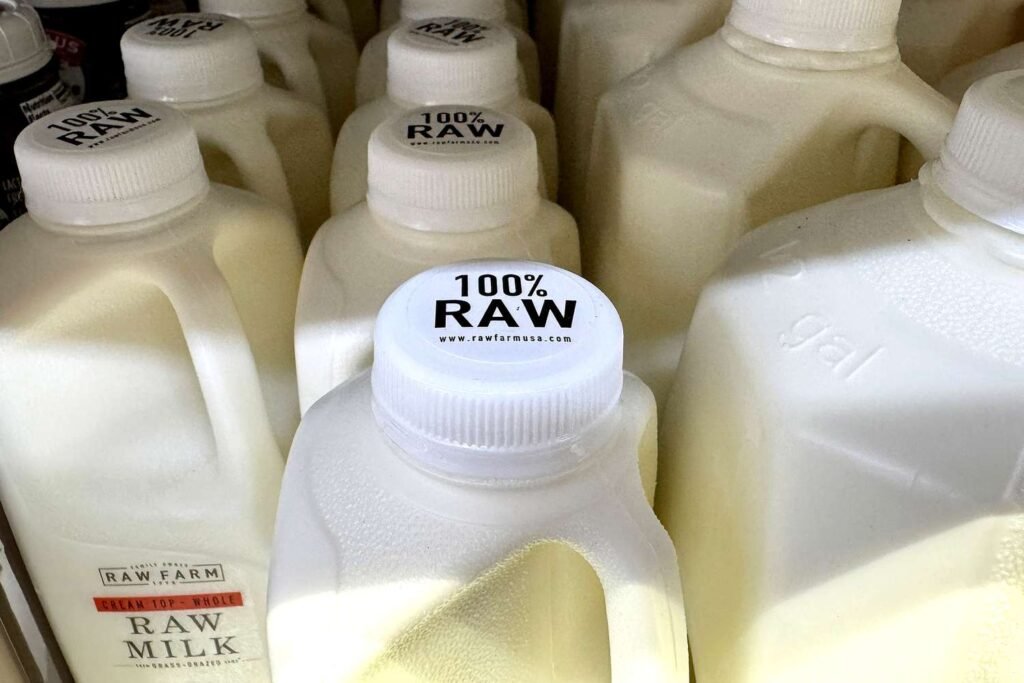There might soon be a way for you to enjoy your raw milk without the increased risk of harmful pathogens.
Tamarack Biotics, a California-based company, announced that it had received approval from the U.S. Food and Drug Administration (FDA) for its UV light technology, which aims to eliminate potentially dangerous pathogens in raw milk.
According to a company statement, the technology, known as TruActive, “eliminates harmful pathogens while preserving the enzymes, proteins, and immunity-supporting compounds that are often destroyed by traditional heat-based pasteurization.” It added, “The result is a scientifically verified, safe, raw milk equivalent — a first in the dairy industry and an exciting development for the growing public demand for raw and minimally processed foods.”
It explained that the process differs from pasteurization because it uses light to treat the milk instead of heat. “Safe treatment of milk hasn’t fundamentally changed in over 150 years,” Bob Comstock, the CEO of Tamarack Biotics, shared. “We’ve created a solution that brings raw milk safety into the 21st century, without sacrificing what makes milk truly nutritious. Our UV process actually achieves a greater level of safety than thermal pasteurization, which is truly remarkable.”
The company added that now that it has FDA approval, it can be used in producing powdered dairy ingredients such as “whey protein concentrate, milk protein concentrate, and immune-supporting compounds like lactoferrin.” However, it plans to expand its use to more dairy products, including cheese, yogurt, kefir, and colostrum.
It also explained that the technology is not yet eligible for use with raw milk. The company noted that this recent step simply paves the way for its application with raw milk, which it believes will happen “as early as 2027.”
While Tamarack Biotics noted that “many European studies” show that raw milk could have the potential to “protect children from developing allergies such as asthma, eczema and food allergies,” it’s also critical to note that many health and food safety experts say there is no discernible nutritional difference between raw and pasteurized milk, as the company claims. However, there is a significant difference in the potential danger of contamination.
“We call this a health halo. Certain things are viewed as naturally good, and things that basically are as close as possible to the raw state are often viewed that way,” Gabriel Keith Harris, a professor and co-director of undergraduate programs in food science at NC State University, shared in a January report on the university’s website. “So if it comes straight off of a farm, straight out of a field, straight out of a cow, then it must be healthy. The idea is that if you are dealing with something that is natural and unprocessed, not heated, that it’s going to be healthier just because it’s closer to the way that it appears in nature. That’s not always correct from a safety perspective.”
Harris cited a 2017 study published in the journal Emerging Infectious Diseases, which found that unpasteurized dairy products cause “840 times more illnesses and 45 times more hospitalizations than pasteurized products.”
However, Harris added that while the protein and sugar content of raw and pasteurized milk remains the same, the “levels of a few vitamins are knocked down a few notches with the pasteurization process. So there are some minor changes, but nutritionally, pasteurized milk is really, really close to raw milk.”
The FDA also explained on its site that “raw milk can contain a variety of disease-causing pathogens, as demonstrated by numerous scientific studies. These studies, along with numerous foodborne outbreaks, clearly demonstrate the risk associated with drinking raw milk.” It added, “Pasteurization effectively kills raw milk pathogens without any significant impact on milk nutritional quality.” The world of sports is constantly evolving, with new technologies and innovations continuing to change the way we play and watch our favorite games. From high-tech equipment to virtual reality training programs, athletes and fans alike are benefiting from the latest advancements in sports technology.
One of the most significant advancements in sports technology in recent years is the use of wearable devices to track and monitor athletes’ performance. These devices, such as fitness trackers and GPS watches, can provide valuable data on an athlete’s heart rate, distance covered, speed, and even sleep patterns. Coaches and trainers can use this data to tailor training programs and make informed decisions about an athlete’s readiness to compete.
Virtual reality (VR) technology is also making its mark on the world of sports. Athletes can now use VR headsets to immerse themselves in realistic training simulations, allowing them to practice their skills in a virtual environment. This can be especially useful for sports like football or basketball, where players need to make split-second decisions under pressure. Fans can also get in on the action, with VR technology allowing them to experience games and matches in a whole new way.
Another area where technology is revolutionizing sports is in the realm of sports broadcasting. With the rise of streaming services and social media platforms, fans can now watch games and matches from anywhere in the world, on any device. High-definition cameras and microphones provide viewers with a front-row seat to the action, while instant replay and in-depth analysis enhance the viewing experience.
In addition to improving the way we play and watch sports, technology is also helping to keep athletes safe. High-tech helmets and pads are designed to reduce the risk of concussions and other injuries, while sensors embedded in equipment can alert coaches and medical staff to signs of fatigue or overexertion. This data can help prevent injuries before they occur, allowing athletes to stay healthy and perform at their best.
As technology continues to advance, the possibilities for the future of sports are endless. From virtual reality training programs to high-tech equipment and broadcasting innovations, the world of sports is being transformed in ways we never thought possible. Athletes and fans alike are reaping the benefits of these advancements, creating a more exciting and engaging sports experience for everyone involved.


